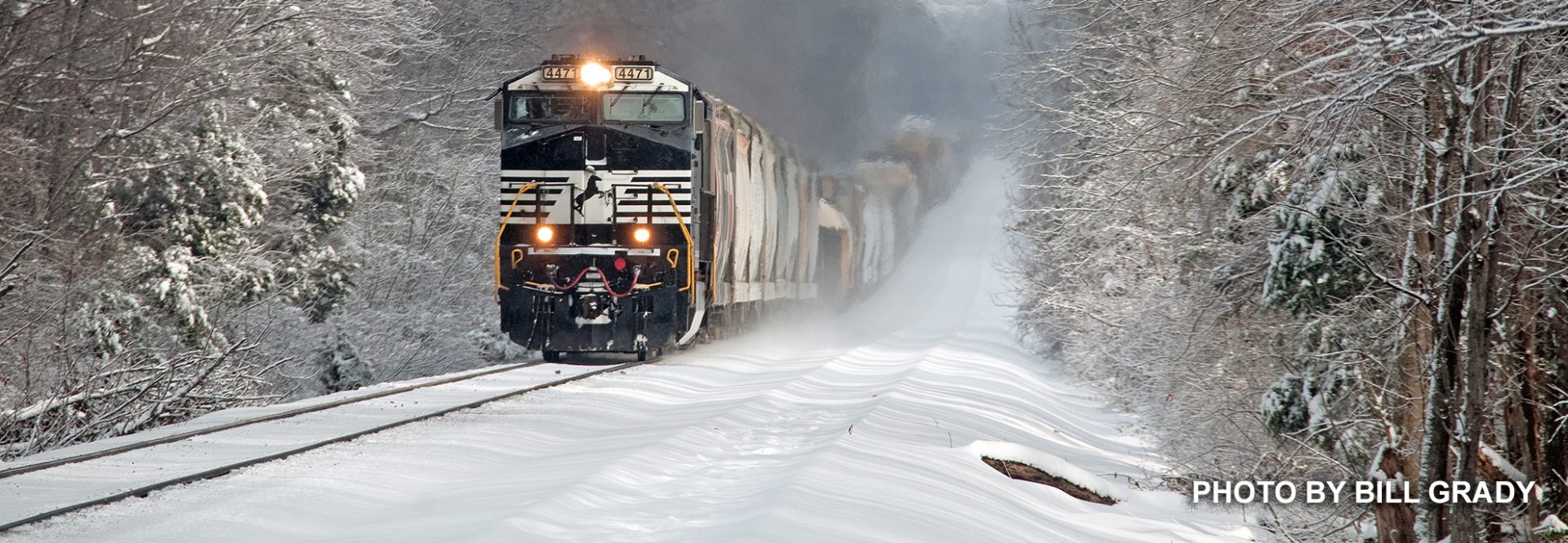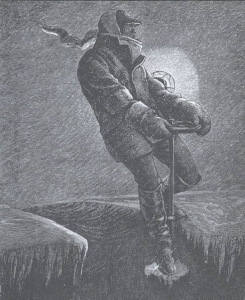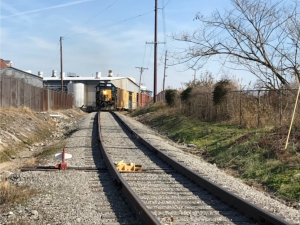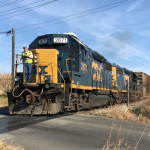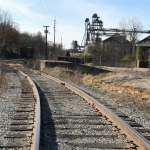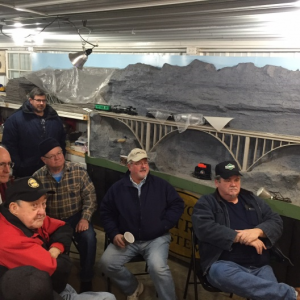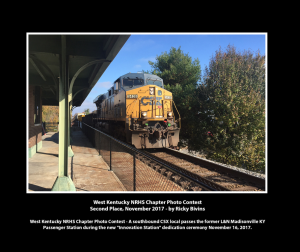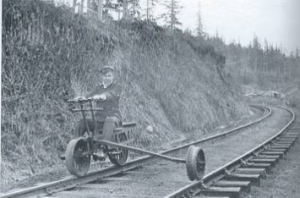 The gentleman on the velocipede is coasting down the line on the Tacoma & Eastern Railway. It’s powered by “Armstrong,” translated: human muscle and sweat. Going back up the grade his arms and legs will get a pretty good workout. There is no chain like on a bicycle, rather a reciprocating walking beam. They were also known as “Irish mail carts.”
The gentleman on the velocipede is coasting down the line on the Tacoma & Eastern Railway. It’s powered by “Armstrong,” translated: human muscle and sweat. Going back up the grade his arms and legs will get a pretty good workout. There is no chain like on a bicycle, rather a reciprocating walking beam. They were also known as “Irish mail carts.”
Velocipedes were complemented by four-wheel platforms with a see-saw affair whereupon up to four men could pump up and down to propel the rig down the track. These vehicles were used to transport track repairmen and equipment to their job-site.
As technology advanced numerous makers produced what most of us will remember as Speeders, or Putt-Putts. In the scene above, Roger Sackett is using a chain and come-along to man-handle his Fairmont Speeder past an obstruction. He and I spent the day up on Snoqualmie Pass trekking along the abandoned Milwaukee right-of-way.
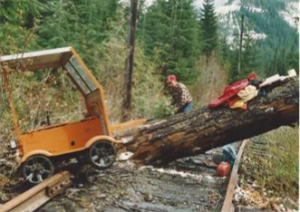 After “setting on” (to use the proper RR term) at Garcia we scooted downhill to the washed out Hull Creek trestle. We then returned up a few miles above where we began, only to find this log that had penetrated our course. But Roger, always prepared, had the equipment for such a task. We succeeded and ventured on, only to find another near identical obstruction around the next curve. It was still a fun outing.
After “setting on” (to use the proper RR term) at Garcia we scooted downhill to the washed out Hull Creek trestle. We then returned up a few miles above where we began, only to find this log that had penetrated our course. But Roger, always prepared, had the equipment for such a task. We succeeded and ventured on, only to find another near identical obstruction around the next curve. It was still a fun outing.
Thousands of speeders were produced by the Fairmont Corporation in Minnesota and the Kalamazoo folks in Michigan to name a few. They were belt driven and powered by a single-cylinder gas engine. The railroads switched to hi-rail vehicles, traditional pickup trucks with retractable flange guide wheels. Now only the railfan recreationist use them on treks around the country. Great fun.
Credits: Velocipede photographer unk., as seen in book: Rails to Paradise. Fairmont Speeder 35MM slide by me.
Submitted by Gary Ostlund
